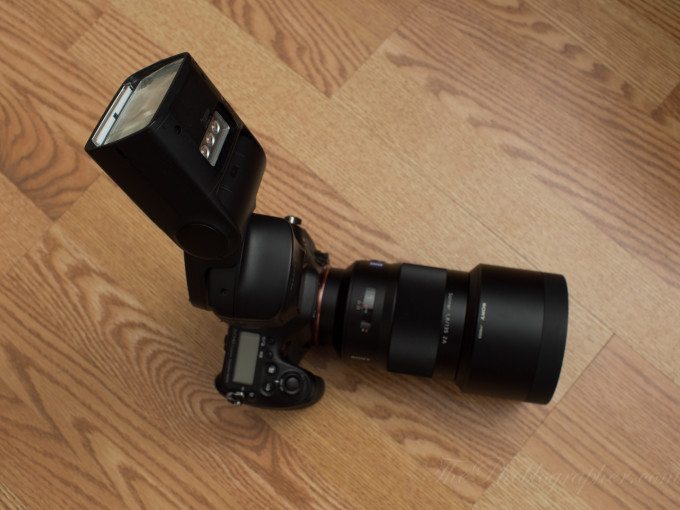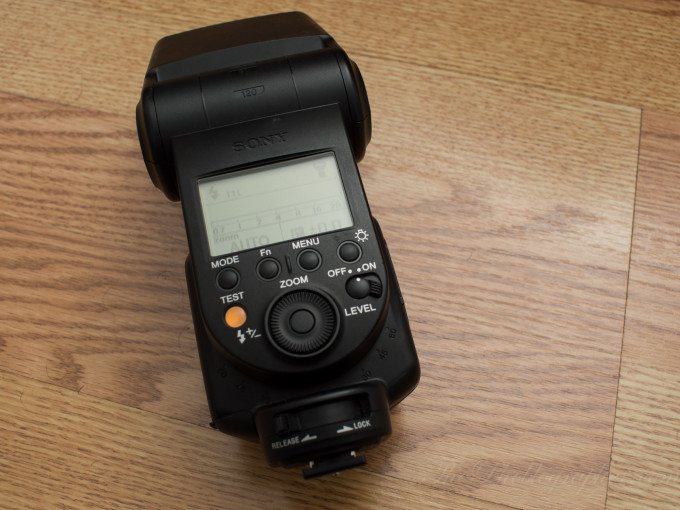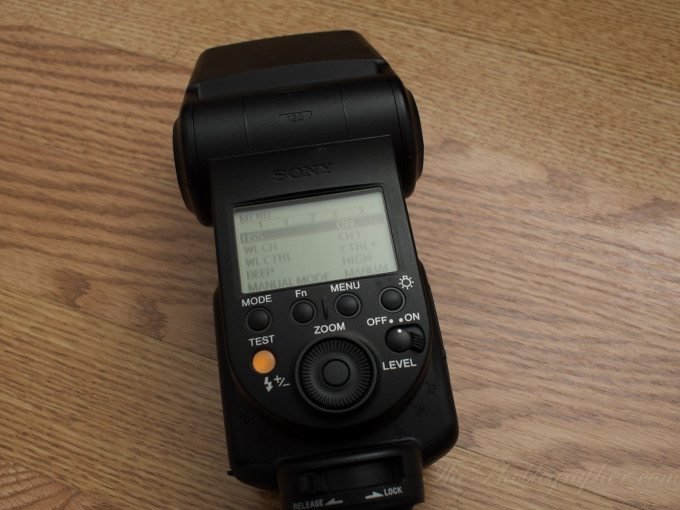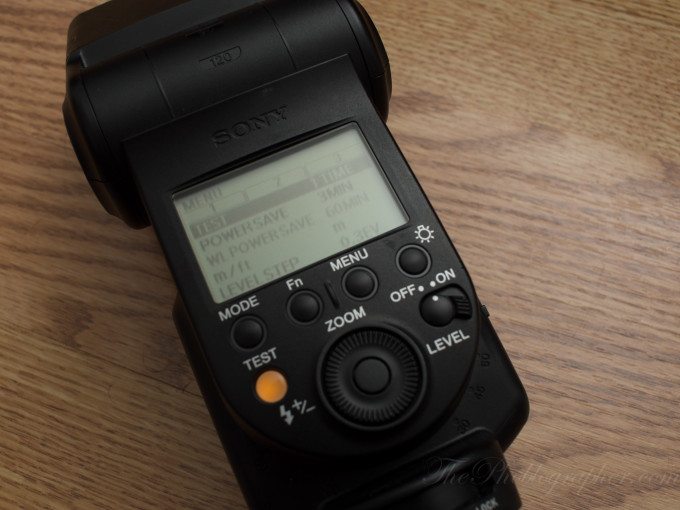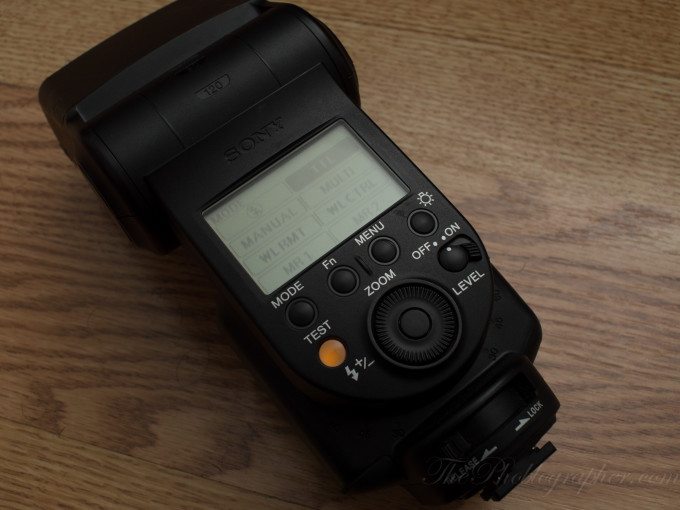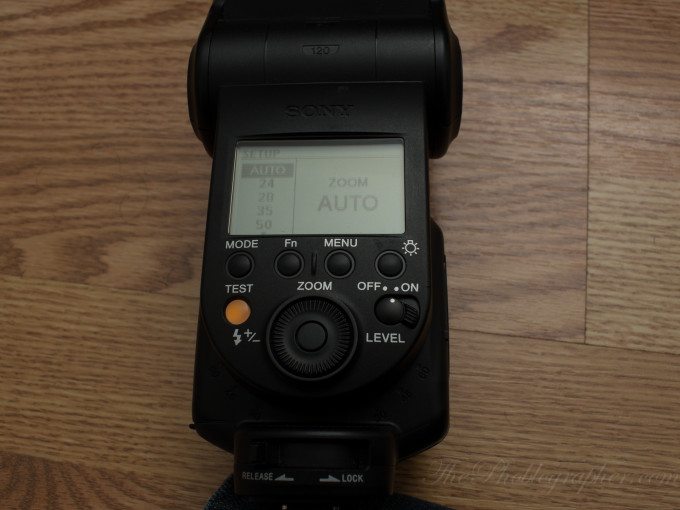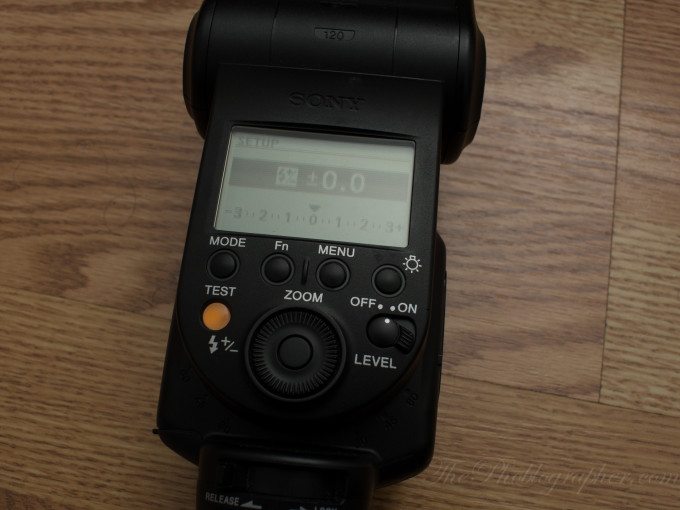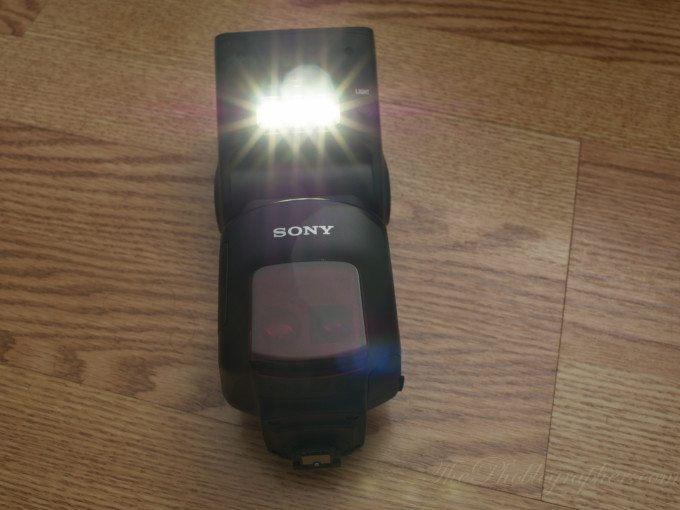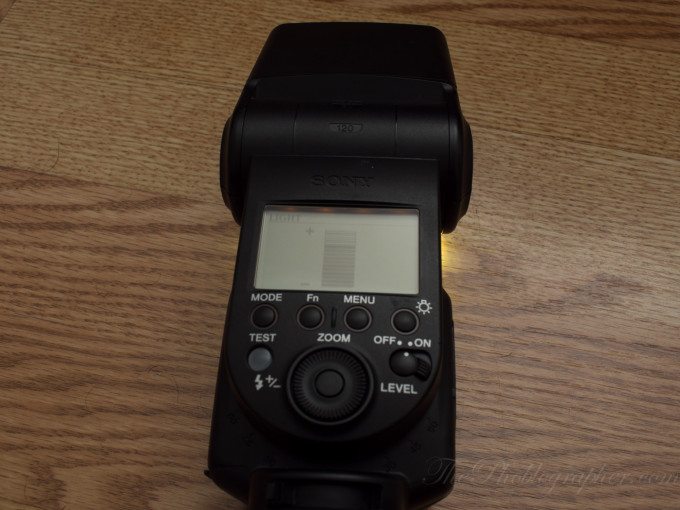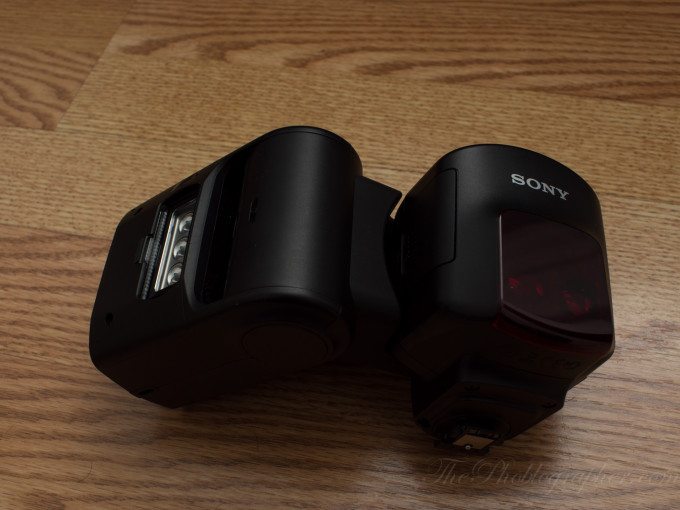Last Updated on 12/19/2012 by Chris Gampat
When we first got our hands on the Sony HVL-F60M, we had some mixed feelings but overall felt that it was fairly solid. Then in California we tested many of them out at once and through light modifiers (strobist style). That’s when we started to become a bit more convinced.
During our recent A99 review, Sony sent us one of the flashes to test. Granted, that greatly limits what we were able to do to rest the potential. With that said, despite a couple of easily fixable flaws, the Sony HVL-F60M represents what companies should be thinking about in terms of design and usability for their flash system.
Pros and Cons
Pros
– Very powerful output
– The cobra design is one of the most useful
– Simple interface
– Beep sound to let you know when it has recharged
– New hot shoe foot
– Nice light for video
Cons
– In order to do HSS, the flash head needs to be forward
– No real ports for standard radio triggers such as PocketWizards, so you’ll need to use Infrared or some sort of Hot Shoe transmitter.
Tech Specs
Specifications taken from the Sony listing
- Flash Modes : Control: Bounce angles: Upward – 90 degrees; Downward – minus 10 degrees;; Left/ Right (Front/Back) – 180 degrees;Automatic Light Control
- Flash Coverage : GN60 = up to 28 meters (91 ft) at ISO100 with 105mm lens
Gear Used
To do this review we used the Sony A99, 50mm f1.4, 85mm f1.4, HVL-F60M, 135mm f1.8, 24-70mm f2.8, Impact 60 inch Shoot through Umbrella, Roundflash Version II.
Ergonomics
The HVL-F60M is a flash with a very straightforward interface but that also contains deep menus for a flash as it is. The menus are because the flash allows you to have lots of control over almost any parameter one can think of.
For starters, there is a mode button, Fn button, menu button, LCD display illumination, on/off switch, zoom function built into the dial as well as exposure compensation, and the overall dial itself which aids in navigation.
One menu allows you to control different things like high speed sync mode (which can only be achieved when the flash is facing forward), wireless channel controls (despite the fact that is infrared, but this can instead be called grouping instead), wireless control (slave or master), the beep mode (to tell you that it is recycled yet for firing again or not, but only works in slave mode), manual, and more. There are also other menus in this category that let you unlock loads of potential.
Other menus can achieve or control other settings such as power saving; which is really nice but can also be a bit tedious in practice–so I usually kept it off.
Then there are modes such as TTL, no flash, manual, multi stroboscopic, wireless remote, wireless slave, and more.
And like any standard flash, there is manual zooming mode. We found this to be best when the flash was fired into a large modifier like a 7 foot parabolic umbrella.
The exposure compensation menu is also very largely and simply displayed; in fact it looks much better than Canon or Nikon’s.
The other little kicker that this flash has going for it is the LED light that can easily be used for videography. It includes a front slide down filter too for gelling the light if you need to.
Since the output can be very powerful there is also direct control for it; which once again is very nicely displayed.
Once again as well, Sony decided to go with the Cobra head design which in practice has been the most logical of any design we’ve used so far for speedlites.
Build Quality
The Sony HVL-F60M’s build quality seems a bit more solid than other standard flashes. Though we never dropped it nor did it really take any major abuse, it spent quite a bit of time in a camera bag that was bumped around on the NYC subway system. So it surely survived that.
When you hold the flash, it feels very good and even when tilting and panning the cobra head the flash still feels extremely secure.
Ease of Use
For the most part, all we did was mostly mount it into the hot shoe and shoot away. While doing this, the flash was in TTL mode for much of the time. However, there were situations where I had to switch to manual for better control, such as with use with the RoundFlash Ring Flash version II.
Switching from manual to TTL is really a breeze, and once again, the interface is very intuitive.
At other times, we were able to use multiple flashes and with light modifiers. Once they were set up, there was really no issues at all except for two major ones:
– The head needs to be turned and faced forward for infrared transmission to work.
– What if the flash is inside of a softbox, umbrella, or beauty dish and what if it is positioned camera left? That fact that it needs to face forward that much hurts transmission because the infrared sensor is then blocked partially and sometimes it won’t fire.
Indeed this is what we encountered, and it was a major problem when trying to shoot.
The obvious solution would be to hook up some sort of radio transmitters. The universal answer is PocketWizards; but at the time of publishing this review there is no way to hook one of them up to the camera because there is no audio jack of PC port. You’ll need to find some sort of other trigger such as an Impact PowerSync 16; but if you do that you obviously lose TTL support and will just fire the flash manually. To be fair this is also what you do with PocketWizards.
This was a major bummer in my opinion because it would mean that Sony has a fully functional and complete system to shake things up and take on Canon and Nikon; but despite doing so many things right they fumbled in this part.
I’ve talked to the Product Manager for the HVL-F60M about this over a period of time, and he’s made it known to Japan. If Sony partnered with other companies to create some sort of trigger for their flashes, there would be no problems. One solution could be Phottix: who has the Odins for Sony’s old Minolta hot shoe. However, the HVL-F60M comes with a converter to use with the old shoe; so that could be one solution.
To be fair, Phottix doesn’t have the reputation that PocketWizard does.
Image Quality
Here are some images shot with the flash. Overall, it was really quite good and worked perfectly with Sony’s metering system in manual mode: so what you saw in the exposure meter is what you got. Bouncing the flash in different ways was also very enlightening and made shooting simple.
However, it is still a hot-shoe flash, and sometimes even in the darkest situations you will need to crank your ISO setting up. Some of these photos were shot at 1600 because I needed to stop down to F8 and beyond.
Color Consistency
Power
Usually when I put a flash in a large ring flash diffuser I don’t usually hear, “Whoa that was bright.” But it does happen, and it did indeed happen at some times when shooting with this flash. It sure can pack quite a punch when needed in most situations; but don’t think of it as a replacement for a monolight.
All photos of our First Impressions with the Lomography Bel-Air were shot with this flash, as were many photos in the A99 review.
Conclusions
In brief, we have nothing else but the highest recommendations for the HVL-F60M flash despite some shortcomings that can be extremely annoying. It is a flash that many other competitors should be looking at and that the design should be praised for.
Please Support The Phoblographer
We love to bring you guys the latest and greatest news and gear related stuff. However, we can’t keep doing that unless we have your continued support. If you would like to purchase any of the items mentioned, please do so by clicking our links first and then purchasing the items as we then get a small portion of the sale to help run the website.



